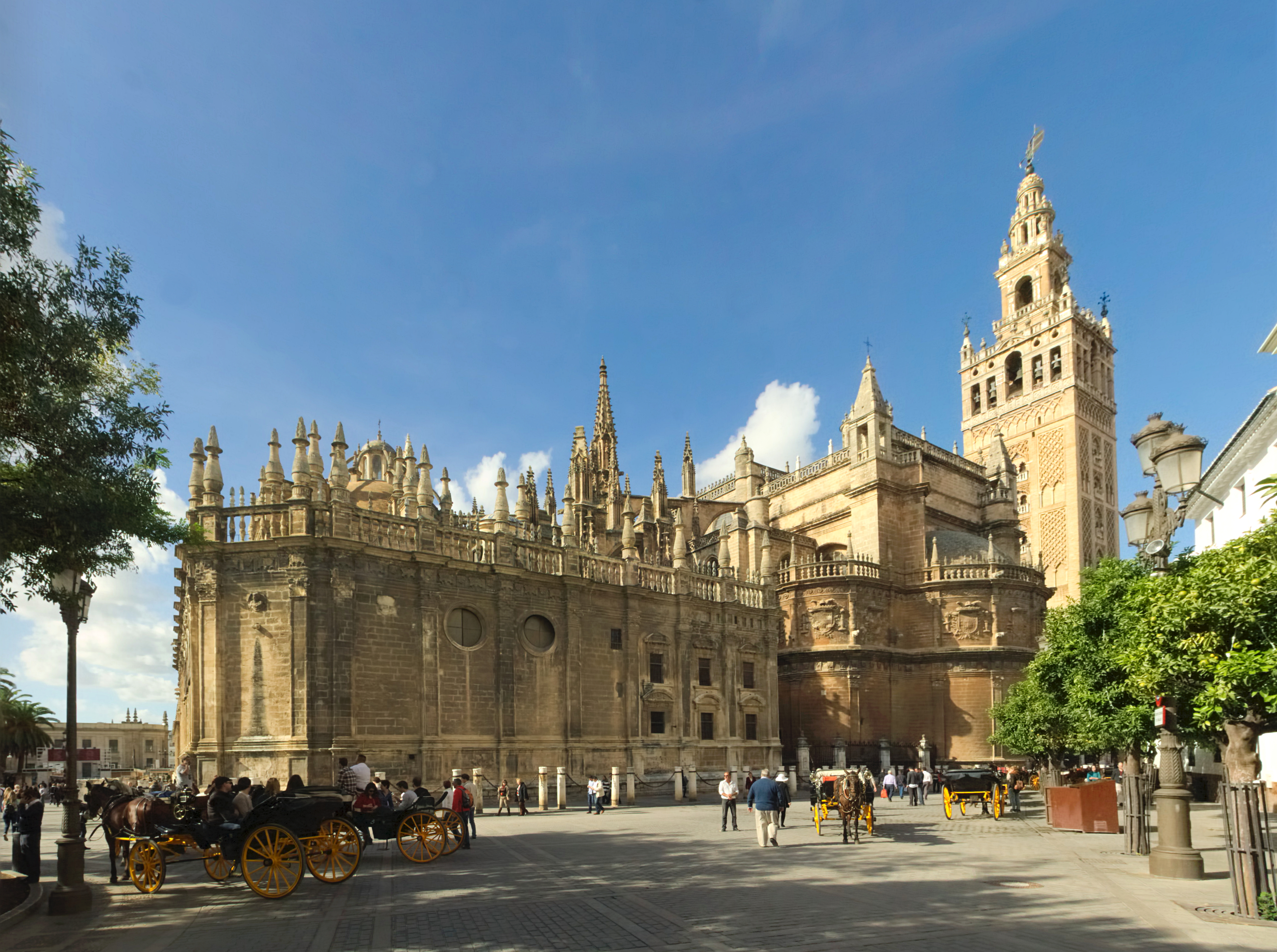Seville, the capital of Andalusia in southern Spain, is a vibrant city known for its rich history, cultural significance, and remarkable landmarks. It is famous for its Moorish architecture, Gothic cathedral, and flamenco culture. Seville's historical significance dates back to its establishment as an important city in the Roman Empire and later as a prominent center during the Islamic rule, which has left a profound impact on its cultural and architectural landscape. The city's most notable landmark is the Alcázar of Seville, a stunning Moorish palace known for its intricate architectural design and lush gardens. Another iconic site is the Seville Cathedral, one of the largest Gothic cathedrals in the world, which is also home to the Giralda, a minaret turned bell tower offering panoramic views of the city.
Seville is located on the Guadalquivir River's plain, providing a strategic location that has historically supported its role as a major trading hub. The city experiences a Mediterranean climate with hot summers and mild winters, making it an attractive year-round destination. Seville is also the birthplace of flamenco, a passionate and soulful musical genre and dance that is deeply ingrained in the city's cultural identity.
The city's cultural importance is celebrated during various events and festivals, the most famous being the Feria de Abril (April Fair) and Semana Santa (Holy Week), both of which draw huge crowds with their lively processions, traditional costumes, and vibrant festivities. Seville's culinary scene is noted for its tapas, a variety of small Spanish dishes that are perfect for sharing, reflecting the city's social dining culture. Interesting trivia about Seville includes its selection as the setting for various famous operas, such as 'Carmen' and 'The Barber of Seville.'
 Ingo Mehling, CC BY-SA 4.0, via Wikimedia Commons
Ingo Mehling, CC BY-SA 4.0, via Wikimedia CommonsSpainEurope
Nearby Places
Ronda(102 km)
Dramatic city perched above deep gorge with historic bullring.Córdoba Mezquita(119 km)
Mosque-cathedral with forest of arches.Mérida(173 km)
Best-preserved Roman ruins in Spain, a timeless testament to ancient Empire's grandeur amidst modern-day cultural vibrancy.Granada(212 km)
Moorish jewel featuring Alhambra palace complex, old Arab quarter, and mountain setting.Úbeda(240 km)
Renaissance architectural showcase in southern Spain, known for its historical landmarks and cultural festivals.Chefchaouen(255 km)
Blue-painted mountain town with Moroccan charm.Log in to write a review.
Sustainable Travel Tips
Plan Mindfully
- Choose direct flights when possible
- Travel during off-peak seasons
- Pack light and bring reusables
- Prefer eco-friendly accommodations
At Your Destination
- Use public transport or walk
- Support local businesses
- Respect wildlife and habitats
- Choose activities with minimal impact
Daily Habits
- Reuse hotel towels
- Take shorter showers
- Turn off lights/AC when out
- Carry a reusable water bottle
